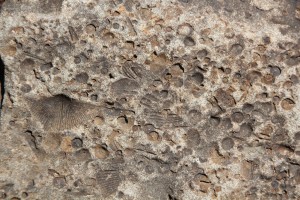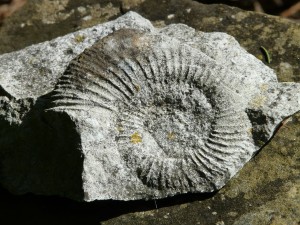 My last few posts I have discussed some of my favorite places to hunt for fossils in the states of Ohio, West Virginia and Pennsylvania. While reviewing the various information, I realized that I was forgetting one major thing.
My last few posts I have discussed some of my favorite places to hunt for fossils in the states of Ohio, West Virginia and Pennsylvania. While reviewing the various information, I realized that I was forgetting one major thing.
How the heck do you tell the difference between a fossil and just another rock? While some fossils can be easy to identify, others can be difficult to see. So if you’re new to the hobby of fossil collection, here are some great ways to tell what you have.
The first thing to remember is that there really isn’t any hard or fast rule to telling whether you have a plain old rock or fossils. There are a few “tricks” that you can use.
The first thing is to consider the rock in which you are finding the potential fossil. As a general rule, fossils form in sedimentary rock, or rock where material has been laid down or deposited. You’ll rarely find fossils in metamorphic or igneous rock.
Second, a fossil will usually be smoother to the touch than the surrounding rock, and also may be slightly different in color. If, however, you find a contender that has been damaged (you wouldn’t damage a potential fossil),  a true fossil would keep the internal structure of the original bone.
a true fossil would keep the internal structure of the original bone.
A third method that can be used to tell if you have a fossil is to lick the rock that contains the fossil. I know it sounds strange, but here’s why it works. Since the fossilized bone has a spongy texture from keeping its internal structure, the moisture from your tongue is “seeped” into it. This makes your tongue stick to the fossil. Of course, I wouldn’t suggest you go around licking random rocks you find on the roadside, but it is a method used at least one time by just about every paleontologist that I know.
So have some fun collecting!
